| Author | Message | ||
Mark_weiss |
The question was asked, "Didn't you notice a change in vibration? ", "Any warning signs?". My response was, "No". As it turns out, I should have noticed. With the new isolator installed the change is truly remarkable. Vibration levels are no longer annoying, they feel "right". I don't feel the need to find a "better" gear. In fact, I forget to shift up to 5th. Even though the isolator had not yet failed, I probably should have replaced it thousands of miles ago. Here are a few photos: 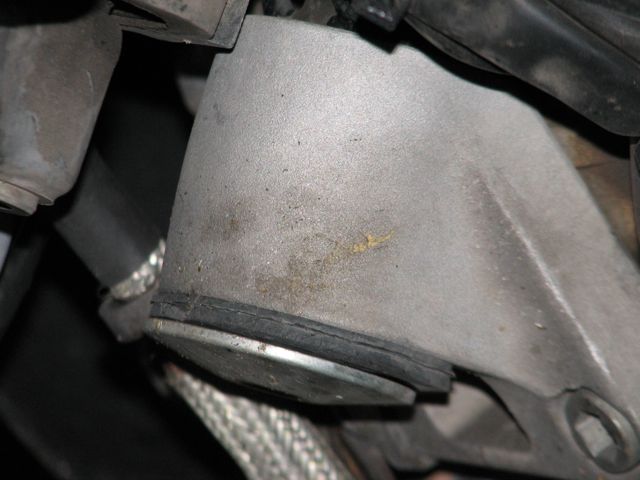 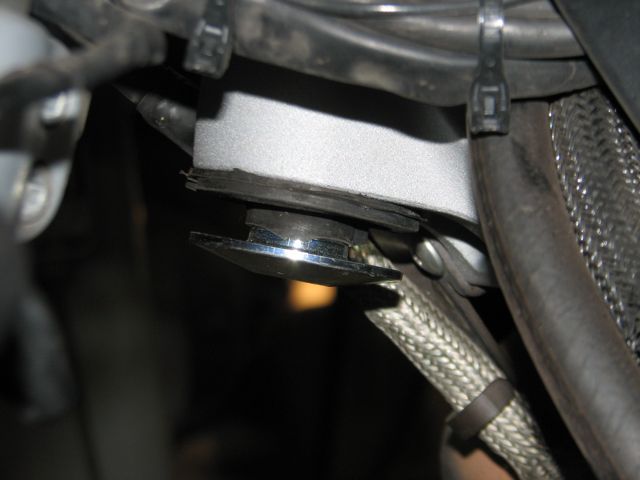 | ||
Mark_weiss |
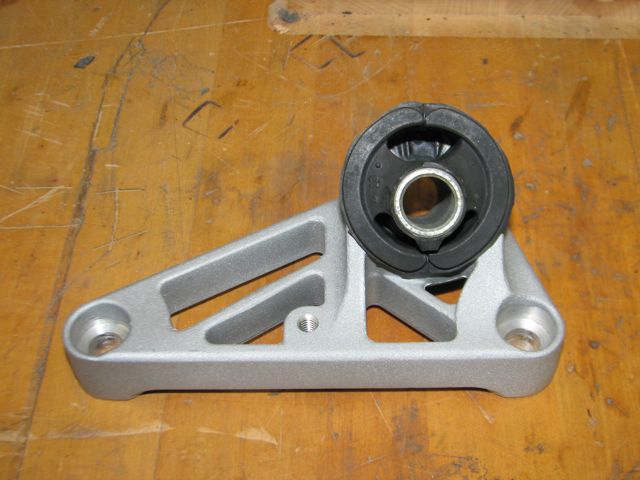 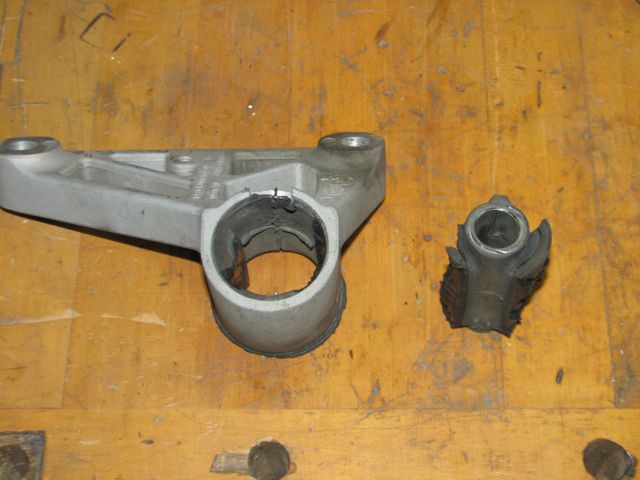 | ||
Nillaice |
what's the measurement from bolt head to cast aluminum body on your new one? measuring the gap at the regular service intervals would provide a reference and allow for monitoring of rubber degradation without taking it off the bike for inspection. *measurements would only be valid if compared to weighted (installed) mount. | ||
Etennuly |
Congrats on your finding a "new" bike. The degradation comes on so gradually over time and miles, that it is difficult to pinpoint what has changed, but you know for sure something has. In my case, being an old gimpy rider with some damage, I notice extra vibrations as they happen. When my first one was changed at 8,500 miles I noticed a big difference in smoothness of the ride. So I knew what to look for when the smoothness would fade. I have replaced the isolator at about every 10,000 miles because it is failing. I am heavy, and my passengers with the bags loaded are always over the limit by more than 150 lbs, so I expect to see this 'early' failure on my bike. | ||
Schwara |
How big of a job is this ... for those of us whose greatest mechanical feats consist of oil changes, 1 tire change, & a breather reroute? | ||
Etennuly |
You need a large allen wrench for the bolts in the head, the 27T for the clutch cable retainer, and that same allen head for the big center bolt. A torque wrench with that allen head bit or a proper fitting torx bit will do. Some kind of jack to support the engine. The bike can sit on the garage floor on the side stand, only need to jack the engine to relieve pressure on the mount and to hold the engine in place. First time out that center bolt can be rusted in a bit. Loosen it first. Use anti-seize on the threads and bolt shaft when reinstalling. Torque by the service manual specs. | ||
Schwara |
Awesome, thanks. That sounds easier than my tire change. I don't recall seeing this as being done in the service history when I bought the bike at 19+K and now I'm closer to 24. This might make a good summer or fall project depending on how the miles add up. | ||
Mark_weiss |
Good idea. The installed gap with the new isolator is 7.7 mm. Gotta record that somewhere. | ||
Mark_weiss |
I'd liken it to putting on a new set of tires. The old ones were clearly worn, but you don't realize how much handling had degraded. The change is so gradual. Over the last few months I'd been thinking to myself that I needed to look at gloves with better vibration isolating properties. Turns out that I'm not as decrepit as I had thought. I also should have noticed that the mirrors did not used to be so blurry. | ||
Motorbike |
Schwara, looks like Etennuly pretty much covered what you need to do. I replaced mine at 8500 miles because I noticed a few tiny cracks in the rubber part. Very easy to do. I might add a few things. Start all bolts a few threads before torquing any of them. You may need to raise or lower the front of the engine slightly as you do this to get things lined up. (All bolts should start very easily. If they do not, stop what you are doing and post another question here on BadWeb. We will help you.) Then tighten and torque the bolts from the isolator to the engine first. After that, torque the center bolt into the frame. Total time should be no more than 30 minutes if all tools are lined up. Thanks. | ||
Motorbike |
Mark_weiss, is that a heat shield on your clutch cable? Where did you get that? Thanks. | ||
Uly_man |
A lot of weight, from the engine hangs on this mount so its no surprise they break. Palmer Products sell a gizmo to stop this without affecting the mount for about $10. I do not know how well it works but from an engineering point of view it seems like a dam good idea. Given the cost of a new mount its dirt cheap as well. | ||
Uly_man |
"I'd liken it to putting on a new set of tires. The old ones were clearly worn, but you don't realize how much handling had degraded. The change is so gradual." Its a very common issue with bikes and very much more so with something like a Buell due to it very good frame and suspension. The classic one with the XB is its front wheel bearings. On the bike and off the ground they seem normal. You need to take the wheel off to find that small wear and its enough to spoil the handling. A cheap fix though and transforms the bike. | ||
Mark_weiss |
It is a length of braided steel hose covering. I had replaced a plumbing hook up hose (sink? toilet?) and did not dispose of the old hose. A few minutes with a hacksaw (next time use a Dremel cut-off wheel) and I had freed a length of covering. After cooking two clutch cables (it's hot here in the summer) a shield seemed a good idea. I secured the top with heat-shrink tubing, but the bottom is free (kinda crude looking though) to allow access to the cable adjuster. | ||
7873jake |
I like the heck out of it and with both items in my garage at the moment, I will blatantly admit to wanting to copy it very, very soon | ||
Etennuly |
The Palmer puck is a rubber washer like device that goes in the mount bolt gap to limit travel. Theory seems to be if it does not max out the travel it should not tear the rubber webbing. IMHO the puck limiting travel will cause vibrations as it takes load in itself. It is a good compromise between longer less vibe travel of the stock set up, and feeling some vibes as it loads the puck that prevents too much web stretching. Uly-man it is more than just the weight of the engine. It is all of the torque from that vibrating lump as it accelerates, decelerates, slams back down from wheelies, and starts out from a stop with a gigantic load mass. With a heavy load moving it to it's limit, it still has to absorb all of the pulses of the V twin. It is a very dynamic part. | ||
Badrap |
Is it possible that the isolator is being twisted during installation causing premature failure? | ||
Etennuly |
Not in my case, I am on the fifth replacement at 58,000 miles. The holes are machine fit. It is just a matter of a part that wears out like a tire would. Some wear out sooner than others, some like fresh rubber, some can wear it down to the threads and not care. Some load the bike heavier and some ride harder, heck some people even leave their bikes outside all of the time. | ||
Motorbike |
Do any of you engineer types out there have any ideas how we could fabricate a different type of front isolator? Something that would last a lot longer? Buying and replacing the isolator right now is not a problem but what are we going to do when they are no longer available? Just planning ahead. Thanks. | ||
Argentcorvid |
I strongly suspect that anything that will last longer will also be less effective at isolating. Why not just go solid mount? my Sporty is, and the vibrations arent that bad. | ||
Mark_weiss |
The front isolator does not so much hold the engine up as it holds it in place. There is not a lot of downward stress on the isolator. The engine is mostly held by the links at front, top, and back. The two isolators keep the engine mostly in the center of the links' range of movement. If you look at the bike side on, the engine does not move so much up and down (hanging from the isolators) as it rotates clockwise and counterclockwise. An isolator could be built using biscuit type elastomers, but the whole part would end up being much, much, larger. Going solid might work. A polyurethane bushing could do the trick. The vibration would be more harsh than stock, but not the freely-slamming-about that comes from a torn isolator. | ||
Buellerxt |
How many miles were on it, Mark? What is your best guess as to why it failed? A lot of two up riding, heavy loads, wheelie slams, etc., or it's going to happen regardless? Any of these isolators going strong out there at 25,000+ miles, anyone? Thanks. | ||
Rwcfrank |
Those bushings look very similar to an automotive A-Arm bushing. It would be a matter of finding what size to press into the aluminum casting and some way of retaining the bushing. I found this after about 60 seconds on Google, Saturn control arm bushings 2 for $40 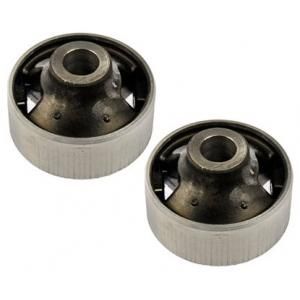 | ||
Snowhoney |
2 for $40 ? not bad price. | ||
Towpro |
VW uses the same thing. ($10.00 each) they even have ones that contain more support rubber from the Audi parts lineup. ($18.95 each) the problem is the control arm bushings press in. The buell part looks like it was cast in place. (Message edited by towpro on December 15, 2011) | ||
Motorbike |
Take a close look at the Buell isolator. It is actually a rubber insulator that is molded into a steel sleeve. This steel sleeve is then pressed into the aluminum and crimped. I studied this quite carefully when I was changing mine. Thanks. | ||
Teeps |
I've had the same thoughts about such repair too. But, considering there is a specification for resonance designed into the Buell isolator, I doubt lower arm bushing would be a viable solution. | ||
Mark_weiss |
Total failure was at 47,900 miles. Thinking back, I probably could have replaced it at about 45k and avoided the excitement. If I replace this new one at 90k, I'll probably be good for the life of the bike. Nothing outstanding about riding style. I go fast on racetracks so ride pretty sedately on the road. If it is any indication, I have not worn out a Sync or 616 in less than 10k miles and run average fuel mileage in the upper 40s on an '08 model. I ride two-up only once or twice per year when I help out with the big triathlons. | ||
Bike_pilot |
Imo it is a rather poor design as it pulls at the rubber in shear while rubber works much better in compression. A better way would be to have rubber pucks on the top and bottom that would compress as the motor rocks relative to the frame, rather than the bonded rubber in shear. These could be cheap and easily replaceable without having to replace the expensive cast aluminum bit. Also, they'd likely last much longer. Like many things on the bike it looks like buell took the engineering short-cut. Anyone, anyone have the most-current part number handy? I'd like to order one so as to have a spare on-hand.  | ||
Natexlh1000 |
There is actually more to it than finding something that will "fit". There is a lot of engineering in the rubber compound itself. If you do find something that will fit the hole so to speak, it may vibe worse on the highway or in traffic. Or it could be better too! I guess if a cheap replacement is cheap enough, it could be worth a try, eh? Nothing too terrible happens if it fails, right? |